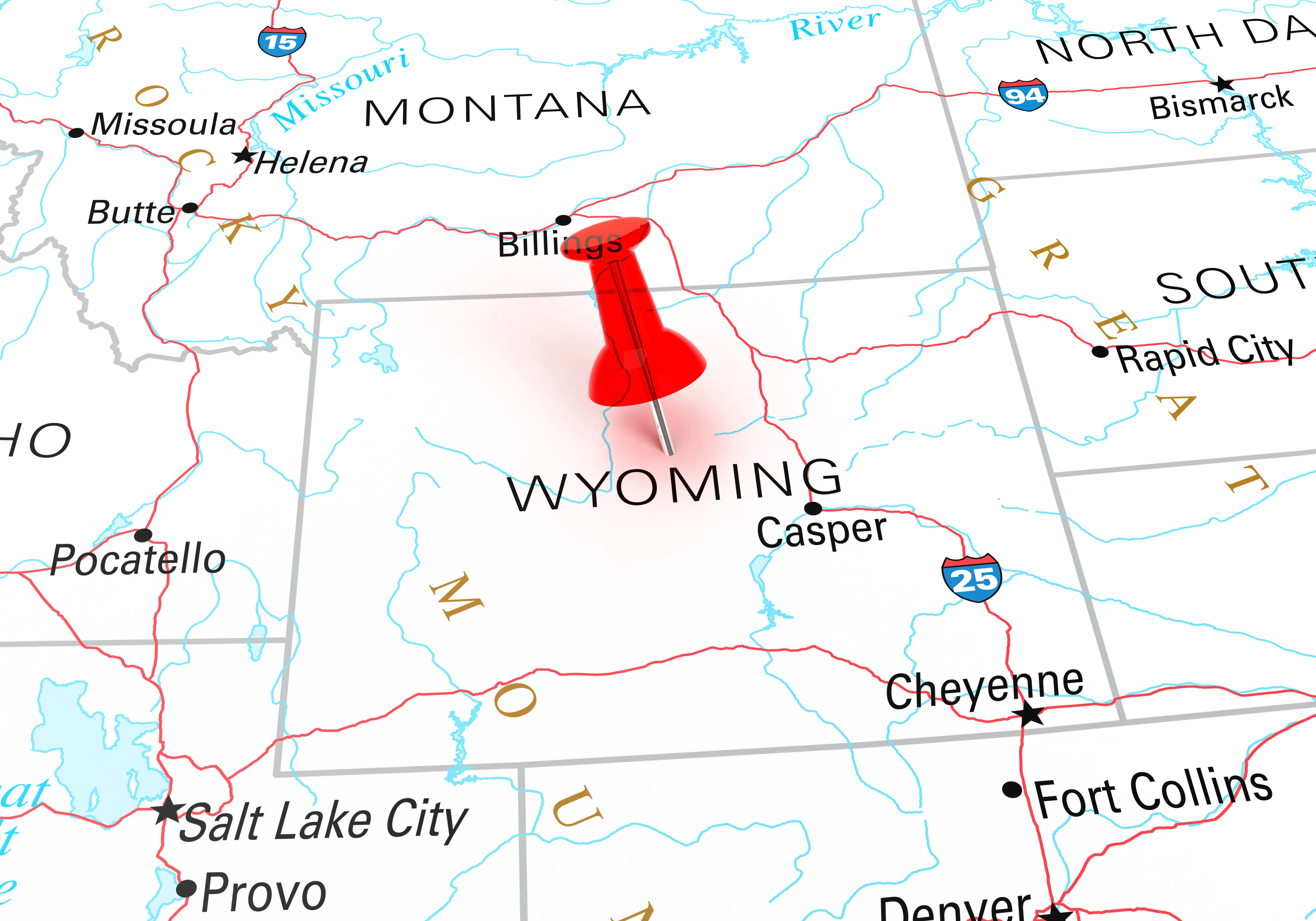
U.S. House committee signs off on delisting grizzly bear
The U.S. House Committee on Natural Resources Tuesday narrowly voted in favor of delisting the grizzly bear from the Endangered Species Act, pushing legislation long sought by Western states elected officials to the next step in the congressional process.

House Resolution 281, the Grizzly Bear State Management Act of 2025, was introduced by Representative Harriet Hageman, R-Wyoming, along with Montana’s two Republican congressmen, Representatives Ryan Zinke and Troy Downing. Representative Russ Fulcher, R-Idaho, and Representative Pete Stauber, R-Minnesota, also cosponsored the legislation.
The legislation directs the secretary of the Interior to remove the Greater Yellowstone Ecosystem population of grizzly bears from the Endangered Species Act, restoring a ruling by the U.S. Fish and Wildlife Service issued in 2017 during the first Trump administration.
That rule was later vacated by a federal circuit court, and the agency, under the Biden administration, reversed its stance and recommended the grizzly stay on the list, and under federal jurisdiction.
“The GYE grizzly population has exceeded the U.S. Fish and Wildlife Service’s recovery goals for over two decades,” Hageman said during the committee’s markup hearing. “Since a mere 3 percent of species listed under the ESA have ever been delisted the ESA desperately needs a success story like the GYE grizzly bear. The grizzly is, in fact, the poster child for how the ESA has failed in terms of what it was intended to do and how it has actually been implemented.”
House Democrats push back on delisting grizzly bears
But Democrats on the committee pushed back against the bill, arguing that the proposal amounted to a political football and could jeopardize the continued recovery of the species.
© wildpixel - iStock-1393613016
The court ruling that vacated the 2017 delisting rule cited the federal government’s “failure to consider long term genetic effects on other populations and concerns that the decision was driven by political pressure … instead of the best available science,” said ranking member Representative Jared Huffman, D-California.
He said the decision continued the partisan game played with the Endangered Species Act, ignored consultation with Native American tribes on a culturally significant species, and removed public input from the process.
“To legislatively delist the population located around Yellowstone in Wyoming, Montana and Idaho, from the ESA and then block judicial review, that is not going to lead us down the path of success,” Huffman added. “That’s going to lead us to some really unfortunate consequences.”
Different ideas on how to manage grizzly bear populations
Grizzly bears throughout the contiguous states were listed under the Endangered Species Act in 1975 when there were only an estimated 300 to 400 animals left in the wild. Currently, the U.S. Fish and Wildlife Service estimates there are roughly 2,314 grizzlies living between Idaho, Montana, Wyoming and parts of Washington.
During the last decade, a saga of proposed delisting actions, lawsuits and petitions have left the fate of grizzly bears overshadowed with questions.

USFWS - Terry Tollefsbol
Montana previously petitioned the Fish and Wildlife Service to delist the species in the Greater Yellowstone Ecosystem and the Northern Continental Divide Ecosystem, centered around Glacier National Park and the Bob Marshall Wilderness, but the agency rejected the petition early this year. A similar petition from Wyoming was also rejected in the final weeks of the Biden administration.
Instead, the Fish and Wildlife Service proposed a new comprehensive approach to federal grizzly management, including consolidating grizzlies living in six distinct recovery zones into a single population. That move would have prevented sub-populations, such as the Greater Yellowstone Ecosystem, from being considered for delisting separately from the species as a whole.
Montana officials derided that decision, with Montana Governor Greg Gianforte, a Republican, saying the administration was embracing a “scorched earth strategy” in its final days. He added that he looked forward to working with the Trump administration on a new path forward.
Representative Zinke shared similar sentiments at the time: “Thankfully the political hands pulling the strings at the U.S. Fish and Wildlife Service are about to be fired and President Trump will no doubt immediately rescind this train-wreck decision.”
Zinke briefly served as Interior secretary during Trump’s first administration and was in office when the 2017 delisting was announced.
Zinke’s office did not respond to a request for comment about the committee’s vote on the 2025 rule or questions about preventing judicial review.
But Montana U.S. Senator Steve Daines praised Tuesday’s vote in a post on the social media platform X, formerly Twitter, that “delisting the grizzly bear is long overdue.”
Conservationists remain concerned about grizzly populations, habitat
Ahead of the committee vote, more than 50 conservation organizations signed onto a letter urging representatives to vote against the legislation.
“The grizzly bear populations in those locations are stable and growing, but conservationists remain concerned about the geographic and genetic isolation of those populations, the threat of increased human-induced mortality through hunting or predator control if they were delisted and management returned to the states of Montana, Wyoming, and Idaho, and the effects of delisting particular populations on grizzly bears in the rest of the lower-48 states,” the letter states.
Chris Servheen, a retired Fish and Wildlife Service grizzly bear recovery coordinator who petitioned the federal government to consider managing grizzlies as a single population — the plan the agency put forth this year — said in a statement that the efforts to delist grizzlies by congressional actions ignored key components of the Endangered Species Act.
“The current administration and Congress are working to defund grizzly bear science and monitoring, dramatically reduce funding for federal land management agencies in grizzly range, increase timber harvest and road building in grizzly habitat, and weaken or eliminate the fundamental laws that grizzly recovery depends on like the ESA, the National Environmental Policy Act and the United States Forest Service Roadless Rule,” Servheen said. “At the same time, recreation pressure on public lands and private land development are accelerating rapidly in grizzly habitat putting even more stress on grizzlies. Congressional delisting while the cumulative impacts of these actions are ongoing is irresponsible and will result in immediate declines in grizzly numbers and range.”
During the committee discussion, Representative Hageman hammered home her argument that the reason environmental groups and previous administrations had pushed to keep the grizzlies listed was for “controlling large swaths of land and water resources. It’s that simple.”
She said that both individual states, and the federal government, have limited resources to spend on issues like endangered species, and they should be allocated to where the need is highest.
“There are species that truly do need our protection and need the resources to be made available so that we can protect them and recover them,” she said. “When we are wasting money on a recovered species, those are resources that cannot be used for that purpose.”
House Democrats propose bill amendments
Democrats proposed three amendments to the bill — one to require the Department of the Interior to follow the new 2025 species assessment issued by the Fish and Wildlife Service that considered all grizzlies in the lower 48 to be considered a single population; another to require more tribal consultation in management decisions for grizzlies; and a third that sought to strip out the prohibition on judicial review in the bill.
All three amendments failed on party-line votes.
On the discussion over judicial review, Hageman said the point of the bill is to carry out the purpose and intent of the Endangered Species Act, and removing the legal provision amounted to a “gift to the radical environmental lobby.”
“Until the bear has returned to state control where it belongs, lawsuits and ever shifting recovery standards will stand in the way activist judges have stood in the way of delisting for far too long,” she said.
Hageman added that when the grey wolf was delisted in 2011, during the Obama administration, a similar provision was put into that legislation.
The committee voted 20-19 along party lines to recommend approval by the full House of Representatives.
Huffman gave notice that he intended to file “dissenting or minority views,” on the measure for the full chamber.

















